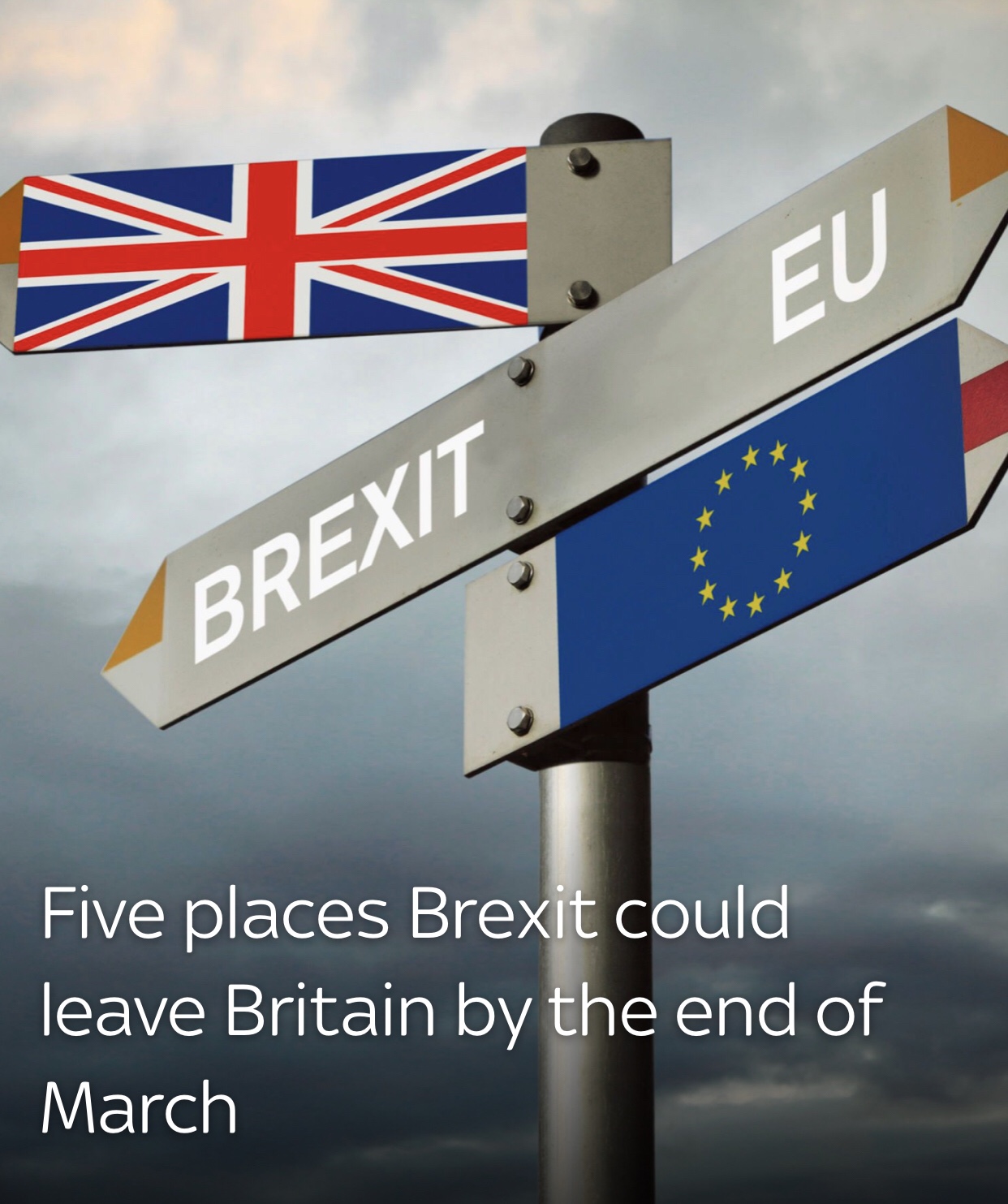Five places Brexit could leave Britain by the end of March
With just 10 days to go until the UK is due to leave the EU and still no deal ratified, that crisis could be resolved or deepen even further.
It all hinges on Prime Minister Theresa May, and her discussions with the EU about delaying Brexit.

Most people, including her own Cabinet ministers, are not sure which direction the country will head in as the clock ticks down further to exit day.
But there are only a few options at stake, so Sky News takes you through the five places Brexit could leave Britain by the end of March.
- PM gets her deal through
There is a chance Mrs May could bring another meaningful vote on her Brexit deal next week.
After the Commons Speaker cited an old parliamentary rule that blocks MPs being forced to vote on the same issue repeatedly in a short space of time, she could return from a Brussels summit this week claiming changes to the divorce deal.
That would allow her to bring it back to Westminster again and hope the political message of a long delay to Brexit is enough of a deterrent to get her own backbenchers to support the deal.
She still has quite the journey, though.
Only three MPs have publicly confirmed they will back the deal, out of 75 she needs to win over.
And even if the deal creeps over the line, a Brexit delay of at least three months seems almost inevitable.
- No deal
If Brussels refuses to approve an extension of any type, the UK could be heading for a no-deal divorce.
Michel Barnier, the EU’s chief negotiator, said a delay was far from certain and called on people to “finalise all preparations” for no-deal.
Irish foreign minister Simon Coveney has also cautioned: “I think people would be very foolish to assume that this is just some kind of political game and that an extension will automatically be facilitated.”
No-deal is the default legal position if no agreement is in place and no delay confirmed.
- Brexit delayed by three months
Mrs May is contemplating one of two types of delay.
The first would see the UK stay a member of the EU until 30 June, to get both sides’ legal affairs in order if a Brexit deal is passed soon.
The date has been set because it falls before the European Parliament’s new sitting.
Neither side wants the UK to participate in the election, so it cuts off just before MEPs take their seats in Strasbourg.
Mrs May would first have to request such a delay, and the EU would have to accept it – both before the original Brexit date of 29 March.
- A long delay to Brexit until..?
The second type of delay Mrs May could request is a longer one.
Suggestions include until the end of 2019, or until when the planned transition period would run out, at the end of 2021.
Some reports have suggested the prime minister could request both a long and short delay, with the option to pull Britain out of the EU whenever a deal is eventually ratified.
But Mr Barnier shot down that suggestion on Monday, saying: “It’s either one or the other.”
There have also been claims the EU could hold a special summit next week to decide whether to accept any delay request.
- A few other options
These are truly exceptional times, so there are lots of other things – albeit unlikely – that could happen.
Mrs May could revoke Article 50 – the EU exit mechanism – keeping Britain in the EU as a way to avoid no-deal, even though she has previously ruled this out.
She could resign as prime minister in a bid to force the EU to delay Brexit, and try again to strengthen her grip on parliament to get her deal through.
Or she could be forced out, if Labour tables another no-confidence vote in the government and enough Conservative MPs back the move in a bid to break the Brexit logjam.
Either way, the government and parliament can’t hide from making decisions anymore with Brexit still legally just over a week away.
Source: SkyNews
You must be logged in to post a comment.